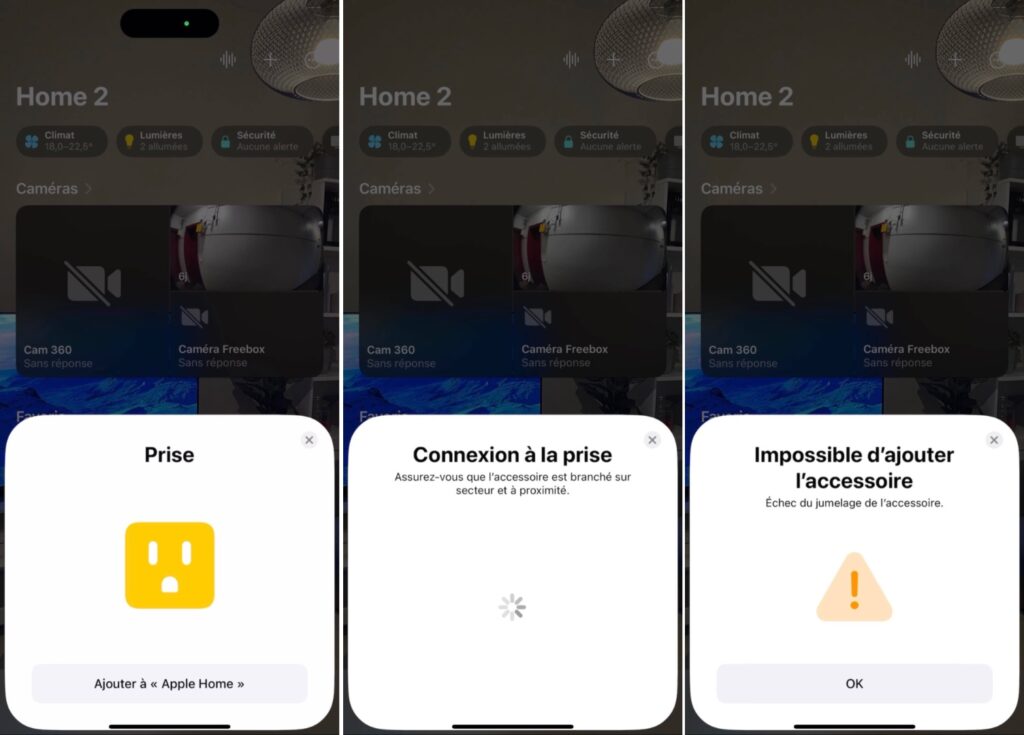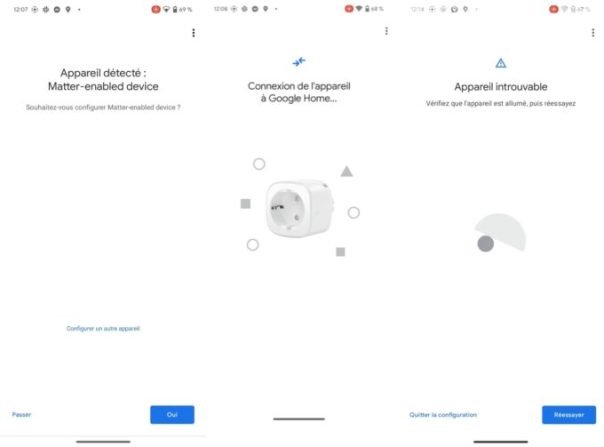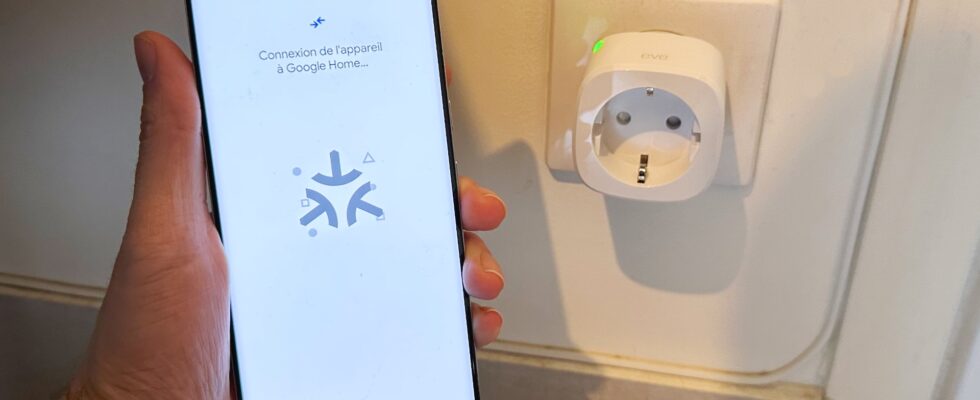Numerama received one of the first Matter compatible products on the market. Is adding a smart plug as simple as what brands have been promising for several years? Unfortunately, not everything went as planned.
A first version of this article told about our failures to configure the Eve Energy connected plug with Matter.
After multiple tries, with the help of the company, we finally managed to configure the socket in Apple Home. On the other hand, it is still impossible for us to add it to Google Home.
After several years of negotiations, the Matter standard was launched in November 2022. Its existence is as ambitious as it is perilous. Matter is based on the alliance of the biggest brands on the planet, aware that they will not succeed in making the connected home popular if they continue to fight. Apple, Amazon, Google, Samsung, Ikea, Philips… These competitors have agreed to put aside their differences to manufacture a standard, which theoretically allows any Matter product to interact with any other device, provided that it too is Matter approved.
In the near future, plugging in a light bulb should send a notification to your phone so you can add it to your app. Apple Home, Google Home Where Amazon-Alexa. Matter eliminates the need to download specific applications and, if all goes well, should get rid of connection bridges (you still need a compatible router, such as a HomePod or Google Nest).
In January 2023, Matter is still very rare. No brand sells compatible objects, but some are starting to deploy updates. Despite the omnipresence of Matter at CES in Las Vegas, everything suggests that the development of the standard will take time, especially since it will first be necessary to sell existing stocks before seeing Matter-compatible products arrive as soon as possible. their way out of the box. While waiting for the revolution, the Eve brand sent Numerama one of the first products natively compatible with Matter, before its marketing in March. Here is the report of this first test.
Despite 15 tries, impossible to add the socket
Normally, Matter is supposed to be simple to use. Modeled on Apple’s HomeKit system, the standard is based on automatic detection of the device, supported by a unique security code, which prevents your neighbor from controlling your device remotely. Logic would have it that by plugging in the socket, a notification would automatically appear on the smartphones in the house. Since there are several HomePods and a Google Nest Wifi Pro in our test area, Matter should have worked on both iOS and Android.
Problem: After plugging in the plug, nothing happened. iOS and Android acted as if nothing had happened.

So, we decided to opt for the manual addition. In the app House from Apple, it is possible to add an accessory by scanning its HomeKit or Matter code. That’s what we did. The app then immediately understood that it was a plug, which might suggest that adding the Eve Energy would work. Unfortunately, all our attempts failed. Despite three restarts, two changes of device and about fifteen tries, the plug was never added to the application’s Matter network. Apple Home.

After these successive failures, we suspected a problem with the product sent by Eve. The code on the box corresponds to a Matter product, but we wondered if the plug provided was really up to date. In this case, we would have been at an impasse. The Matter code would have been useless while, without HomeKit code, it would have been impossible to add the accessory to the application House to update it. However, that was not the root of the problem.
On Android with the app Google Home, Eve’s socket has been detected as a “Matter-enabled device”. The update has therefore been carried out, which means that the code provided in the box is the correct one. We then tried to add the socket to the Google application, to no avail. The animation is pretty (the product is recognized when you scan its code), but absolutely nothing happens. At the end, we get an error message similar to that of iOS, which does not explain the reasons for the failure.

What about Amazon or Samsung? The first has not yet deployed Matter, the second requires the use of a SmartThings router at home, which we do not have. As for the Eve application, it does not yet support Matter (and the very concept of the standard is to do without manufacturer applications). For all these reasons, we preferred to abandon the experiment.
HomePods were a problem at Apple, the mystery remains at Google
Obviously, Numerama warned Eve of the problems encountered. The company tried to help us find the source of the problem. The delivered product ran well under Matter, which led him to believe that the problem was with Apple. Eve advised us to unplug the HomePods and plug them back in, which didn’t change anything. However, one of his tips caught our eye. Eve advised us to look in the app House which Thread hub was active (the connection bridge responsible for centralizing Thread connections, one of the connection languages used by Matter). We realized that one of our HomePods was designated as a bridge, so we decided to unplug them all and just keep the Apple TV. Miracle, the Matter configuration then worked.

Matter will not magically simplify everything
What happened ? It’s likely that the setup process for a Matter device isn’t very well-honed yet, especially on HomePods (even in the days of all-HomeKit, Apple TV has always been deemed more reliable). All this does not explain the problems encountered at Google, even though we do have a Google Nest Wifi Pro bridge. Even restarting it didn’t fix the problem. Logic would dictate that Matter works better in a few months and that iOS and Android improve the user experience by clearly explaining what is going on.
Even if the outcome of our experiment is happy, our misadventures prove that the connected home is still far from easy in the era of Matter. In the event that something is wrong, finding the origin of the problem is still a serious headache. Matter was supposed to simplify everything, but only succeeded in frustrating us. The revolution will wait a few more months.
Do you like our media? Tell us in this survey!
